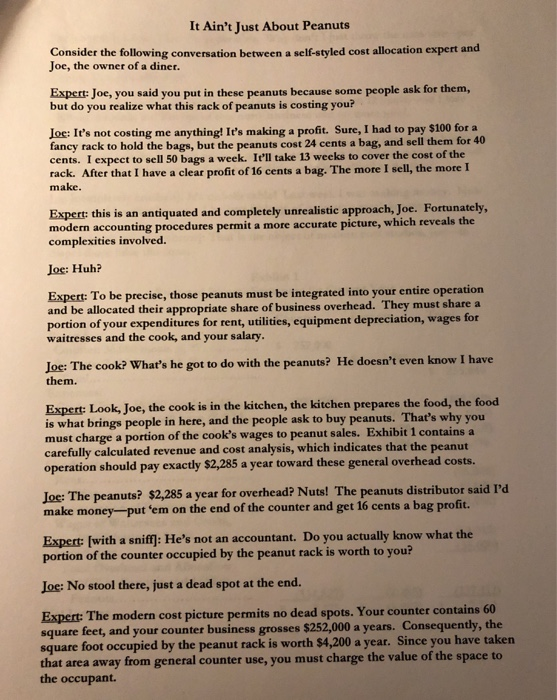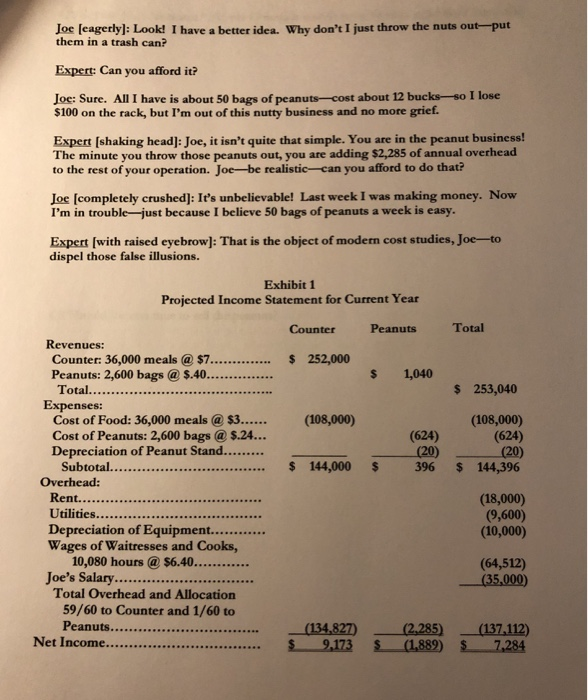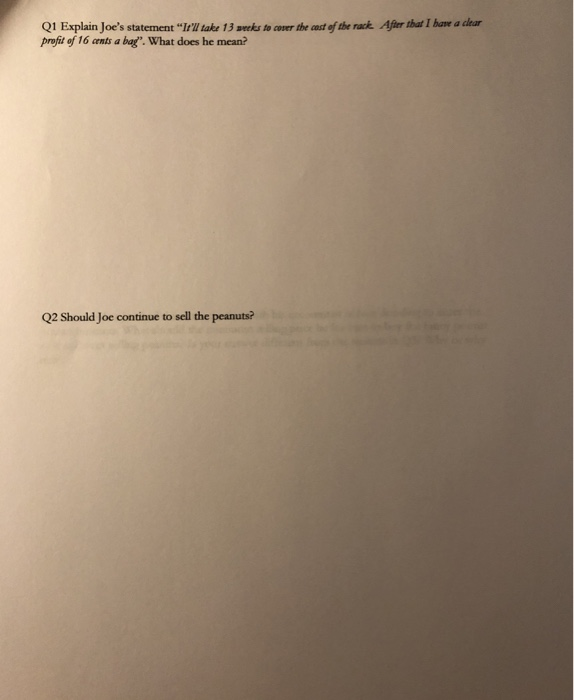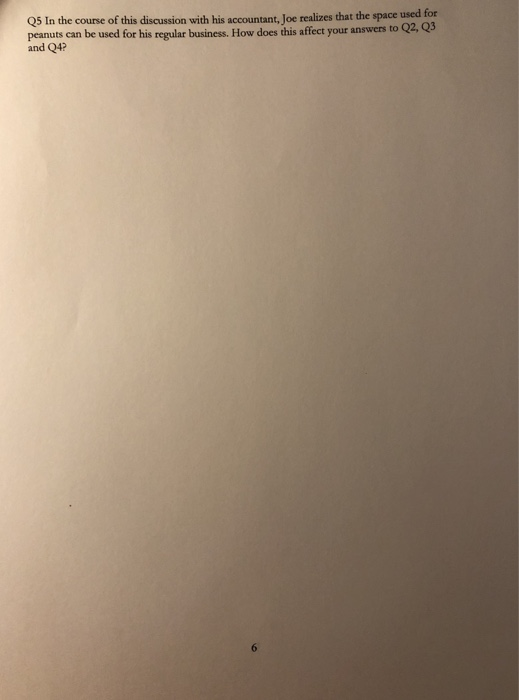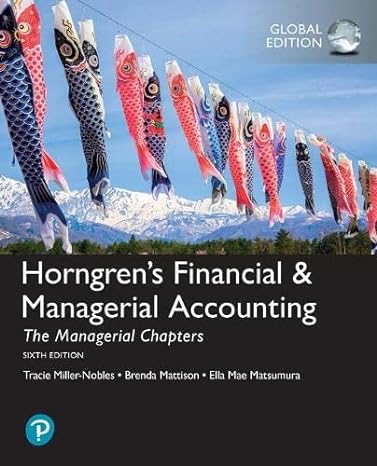It Ain't Just About Peanuts Consider the following conversation between a self-styled cost allocation expert and Joe, the owner of a diner. Experr Joe, you said you put in these peanuts because some people ask for them, but do you realize what this rack of peanuts is costing you? Joc: It's not costing me anything! It's making a profit. Sure, I had to pay $100 for a fancy rack to hold the bags, but the peanuts cost 24 cents a bag, and sell them for 40 cents. I expect to sell 50 bags a week. It'll take 13 weeks to cover the cost of the rack. After that I have a clear profit of 16 cents a bag. The more I sell, the more I make. Expert: this is an antiquated and completely unrealistic approach, Joe. Fortunately, modern accounting procedures permit a more accurate picture, which r complexities involved loe: Huh? Expert: To be precise, those peanuts must be integrated into your entire operation and be allocated their appropriate share of business overhead. They must sharea portion of your expenditures for rent, utilities, equipment depreciation, wages for waitresses and the cook, and your salary Joe: The cook? What's he got to do with the peanuts? He doesn't even know I have them. Expert: Look, Joe, the cook is in the kitchen, the kitchen prepares the food, the food is what brings people in here, and the people ask to buy peanuts. That's why you must charge a portion of the cook's wages to peanut sales. Exhibit 1 contains a carefully calculated revenue and cost analysis, which indicates that the peanut operation should pay exactly $2,285 a year toward these general overhead costs. Joc: The peanuts? $2,285 a year for overhead? Nuts! The peanuts distributor said I'd make money-put 'em on the end of the counter and get 16 cents a bag profit. the Expert: [with a sniff: He's not an accountant. Do you actually know what portion of the counter occupied by the peanut rack is worth to you? Joe: No stool there, just a dead spot at the end. The modern cost picture permits no dead spots. Your counter contains 60 Expert square feet, and your counter business grosses $252,000 a years. Consequently, the square foot occupied by the peanut rack is worth $4,200 a year. Since you have taken that area away from general counter use, you must charge the value of the space to the occupant. Joe leagertlyl: Lookd I have a better idea. Why don't I just throw the nuts out put them in a trash can? Expert: Can you afford it? Joe: Sure. All I have is about 50 bags of peanuts-cost about 12 bucks-so I lose $100 on the rack, but I'm out of this nutty business and no more grief. Expert [shaking head]: Joe, it isn't quite that simple. You are in the peanut business! The minute you throw those peanuts out, you are adding $2,285 of annual overhead to the rest of your operation. Joe-be realistic-can you afford to do that? Jos [completely crushed]: It's unbelievable! Last week I was making money. Now I'm in trouble-just because I believe 50 bags of peanuts a week is easy. Expert fwith raised eyebrowl: That is the object of modern cost studies, Joe-to dispel those false illusions. Exhibit 1 Projected Income Statement for Current Year Counter Peanuts Total Revenues: Peanuts: 2,600 bags @ $.40.... Expenses: $ 1,040 $ 253,040 (108,000) (624) (20) Cost of Peanuts: 2,600 bags @ $.24... (624) (20) Overhead Rent.. (18,000) (9,600) (10,000) Wages of Waitresses and Cooks, (64,512) (35,000) Joe's Salary Total Overhead and Allocation 59/60 to Counter and 1/60 to (134,827) (2,285) (137,112) Qi Explain Joe's statement "Ir take 13 aucks to cover the ast of the rack Afiter that I hame a profit of 16 cents a bag". What does he mean? Q2 Should Joe continue to sell the peanuts? Q5 In the course of this discussion with his accountant, Joe realizes that the space used for peanuts can be used for his regular business. How does this affect your answers to and Q4? Q2, Q3
